Pearl Harbor offers lessons at 75
Last updated 12/6/2016 at Noon
For The Record
Robert Rothrock remembers exactly where he was late Sunday afternoon Dec. 7, 1941, when he heard about the Japanese invasion of Pearl Harbor.
“Me and some kids had been down to the creek and we were (walking) on the Cotton Belt Railroad tracks coming home,” says the 91-year-old Little Cypress resident, a native of Fort Worth.
“This boy I was with had two little sisters and they came and told us they heard it on the radio.”
Alice, Rothrock’s wife, was just 7 and living in Port Neches on the date President Franklin D. Roosevelt said “would live in infamy” -- when Japanese planes flew out of the early-morning sky to bomb and strafe the Hawaiian naval base, claiming more than 2,400 lives and pulling the United States into World War II.
“That was the first time I ever heard newsboys in the street screaming, ‘Extra! Extra! Extra!’ about the bombing,” she said.
Cedric Stout didn’t need mainstream media.
The news reached him first-hand via a couple of Japanese torpedoes that sunk his battleship, the USS Utah.
The Bridge City man, 95, is a rare find these days, a man who survived the hail of explosive ordinance from the sky and the hellfire that was flaming oil floating atop the harbor’s waters and is still walking among us on the 75th anniversary of what’s become known as Pearl Harbor Day.
He’s the only Pearl Harbor survivor surviving from a list of Golden Triangle men who were there that day provided by the Southeast Texas Veterans Group and published in this paper 10 years ago.
Bill Stephenson of Vidor, 93, who was aboard the USS Honolulu during the attack, died a week ago at a Beaumont hospice.
Like most stories from Pearl Harbor survivors, Stout’s begins with breakfast in the mess hall of his ship.
Then he heard the first bomb explode.
Initially, the newly minted sailor thought it was a drill.
“I saw all the commotion going on and thought, somebody’s having some fun,” he said as part of an oral history prepared for the Pearl Harbors Survivors Association. “But then a bullet went ‘phew’ right over the top of my head and I knew it wasn’t no fun.”
A World War I battleship that had once carried president Herbert Hoover on a diplomatic mission to South America, the USS Utah was being used for target practice by the Navy in 1941.
At Pearl, it was berthed on the opposite side of Ford Island from Battleship Row, where most of the attack’s damage was inflicted.
Within minutes of the first shots being fired that morning, torpedoes fired by dive-bombing Japanese planes slammed into the Utah’s hull and the ship began to list. Just 10 minutes later, the ship snapped its mooring lines, rolled over and capsized.
In those 10 minutes, Stout said he received an order to abandon ship and complied -- eventually.
At first, he said, machine gun fire from the attacking warplanes kept him from running across the deck.
“When it became apparent that the Utah was going to roll over,” Stout said, “we decided our chances were better dodging bullets than staying aboard to drown.”
Just in time, Stout and other sailors made it to the lines, slid down to the dock and found cover ashore.
A total of 64 men went down with the ship and died.
For the rest of that long day, Stout helped the rescue effort. He then spent three days in the hospital for shell shock.
Earlier this week, Stout was fighting a cough and unavailable for a new interview.
But daughters Darlene Montagne and Janine Carter reported their dad was in great health overall.
“He still cuts his own grass and he just passed his driver’s license eye test, though he doesn’t drive around a lot these days,” Montagne said. “His heart doctor said ‘You don’t look 95 at all.’”
“His bones are as strong as a 45- or 50-year-old,” Carter said. “He’s a strong old dude.”
Stout was born in Leonville, La., in 1921 and grew up in a family of sharecroppers, working the fields by hand during the Depression. At 17, he joined the Civilian Conservation Corps, a public work relief program for unemployed, unmarried men and spent time building parks in Oregon.
He returned to Louisiana and joined the Navy, enlisting in March of 1941.
“He said he decided to join the Navy because everybody said that was where you got the best food,” Carter said.
“But he was a seasick sailor,” Montagne added. ”He did not like the Navy when he was in there.”
Stout spent most of the war aboard a ship. After the Utah was sunk, he was assigned to a succession of destroyers, destroyer tenders, supply ships, transports and even a 200-foot tug.
“He stayed down in the engine room,” Carter said. “He was a mechanic.”
On leave in 1944, he married Delma Courville of Sunset, La., and the couple had nine children.
“If you went to school in Bridge City between 1964 and 1985, you probably went to school with one of us,” Montagne said.
After the war, Stout drove a bus in Port Arthur for a time. Then he began a long career working for a grocery wholesaler. He retired in 1988.
After Delma’s death in 1999, Stout took a new bride, Cherry.
Montagne said for most of her life, her father rarely spoke of his time in the Navy.
“It wasn’t until we were all grown and people started asking him about it that he’d tell his story,” she said.
“When you have nine kids, there’s no time for stories.”
The bombing of Pearl Harbor made an immediate impression on another Port Arthur vet – Rothrock.
“I said, ‘I ain’t going to school no more. I’m going to war,’” he recalled.
And he almost did just that, just then. He had made it through the Fort Worth recruiting office and was headed to the train station to leave for boot camp.
“I was on the bus going to Dallas,” he said. “And then my momma caught up with me. I was only 16.”
Busted for lying about his age, Rothrock waited until his next birthday. This time, it took.
“I joined the day after I turned 17 and left Fort Worth the day after Thanksgiving, 1942.”
Rothrock spent the next three years on the USS American Legion, a passenger liner converted to a troop carrier that transported as many as 3,000 Marines at a time into brutal combat operations at Guadalcanal and Bougainville.
Like all in her generation, “Miss Alice” also did her job to support the Allied war effort.
After Pearl Harbor, the government required her family to keep its Scott Pet gas station open all night to be available to fill the tanks of vehicles involved in the hurried construction of the nearby synthetic rubber plants.
At 7, Alice Scott left the heavy work to her dad and two brothers while she handled the books.
“My job was to stick the customer’s gasoline (ration coupon) strips into the book we had to turn in to get gas to refill the station’s tanks,” she said.
“Back then, we had coupons for everything: gas, food, everything was rationed. That’s how we all lived.”
In what has been a trying and troubling year for the United States at home and abroad, this 75th annual remembrance of Pearl Harbor Day offers Americans a pause to appreciate their bounty.
“Freedom isn’t free,” is a message men like Stout and Rothrock strain to hammer home to those they will soon leave behind. But the crucible of Pearl Harbor led to glorious achievements resulting from everyone united in shared sacrifice.
The importance of pulling together for the greater good is a lesson still worth teaching 75 years after Dec. 7, 1941.


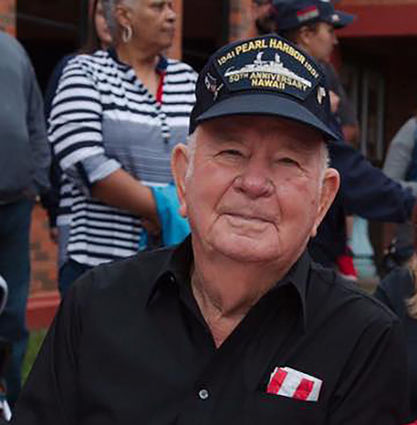
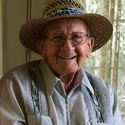
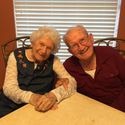
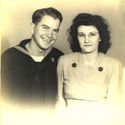
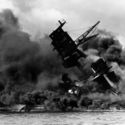
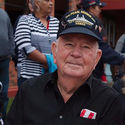













Reader Comments(0)